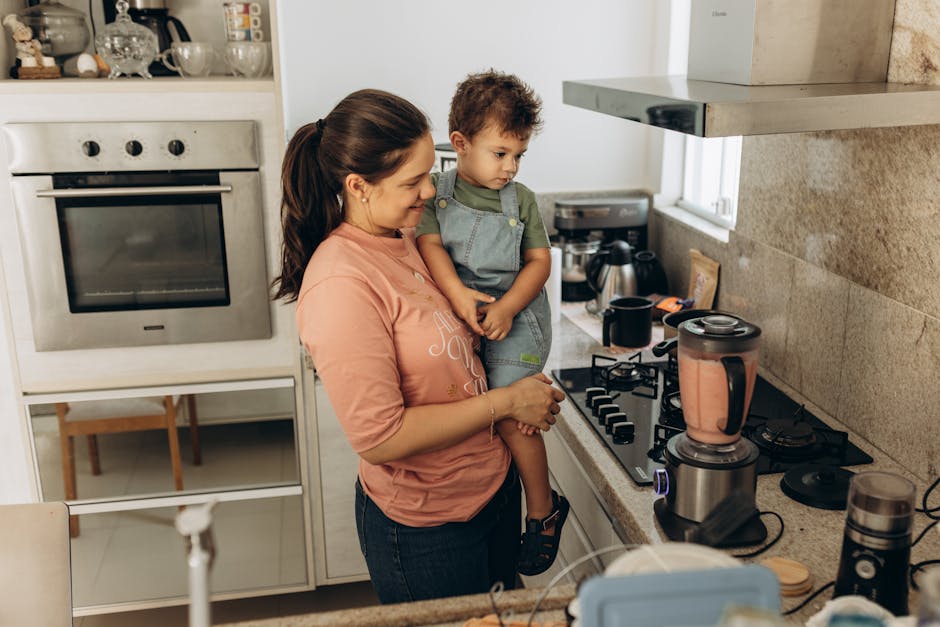Starting a new school year can be both exciting and challenging for blended families juggling co-parenting responsibilities. As a parent in a blended family, I understand the complexities that arise when coordinating schedules and ensuring a smooth transition back to school.
Navigating the demands of multiple households while prioritizing your child’s education requires careful planning and open communication. In this article, I’ll share practical tips and strategies to help blended families effectively manage co-parenting dynamics during the back-to-school season.
From creating shared calendars to establishing consistent routines, I’ll provide insights based on my own experiences and expertise in navigating the delicate balance of co-parenting. Join me as we explore ways to foster a positive and supportive environment for your children as they embark on a new academic year.
Importance of Back-to-School Tips for Blended Families
Drawing from my personal experience and expertise, I highlight the crucial significance of implementing back-to-school tips for blended families. Fostering a cohesive co-parenting strategy during the transition to a new school year is essential for ensuring a harmonious and supportive environment for the children.
Effective organization and communication are key elements that contribute to a successful balance in managing shared responsibilities and schedules within blended families. By incorporating practical tips and strategies tailored to the unique dynamics of blended families, parents can enhance collaboration and streamline the back-to-school process for the betterment of the children’s academic journey.
Creating a Collaborative Co-Parenting Strategy
When it comes to creating a collaborative co-parenting strategy for blended families, communication is key.
Establishing Clear Communication Channels
In co-parenting, clear and open communication is essential. Communicating openly with your co-parent can help in setting expectations, establishing routines, and resolving conflicts amicably.
Utilizing various communication channels such as messaging apps, emails, or shared online platforms can facilitate smooth interactions and ensure all parties are on the same page.
Setting Shared Goals and Expectations
Defining shared goals and expectations with your co-parent can help create a cohesive approach to parenting. Clearly outlining academic goals, extracurricular activities, and behavioral expectations for your children can provide a unified front and minimize confusion.
By aligning on common objectives, both parents can work together towards supporting their children’s educational and personal development effectively.
Organizing Schedules for Smooth Transition
Aligning schedules in blended families is a critical aspect of ensuring a smooth transition for children as they embark on a new school year. I know from experience that harmonizing different routines can be a challenging yet essential task for co-parents.
Effective coordination is key to minimizing disruptions and creating a stable environment for the kids. To streamline schedules, it’s vital to leverage digital tools that facilitate communication and planning. Utilizing shared online calendars can be immensely helpful in syncing important dates, such as school events, parent-teacher meetings, and extracurricular activities.
By having a centralized platform for scheduling, both co-parents can stay informed and avoid conflicts in commitments. Consistency is key when organizing schedules in blended families. Establishing set routines for pick-up and drop-off times, homework schedules, and bedtime routines can provide children with a sense of stability and predictability.
Consistent routines help children feel secure and ensure a smoother transition between different households. Moreover, setting realistic expectations regarding schedules is crucial for effective co-parenting.
Clearly defining responsibilities, such as who will handle transportation or coordinate after-school activities on specific days, can prevent misunderstandings and reduce stress. Open communication about schedule changes or conflicts is essential to making adjustments promptly and maintaining a collaborative approach to co-parenting.
Organizing schedules is a fundamental aspect of navigating co-parenting dynamics in blended families. By embracing digital tools, maintaining consistency in routines, and establishing clear expectations, co-parents can work together effectively to provide a supportive and stable environment for their children during the back-to-school season.
Ensuring Consistency Between Households
Consistency is key when it comes to creating a seamless environment for children in blended families. It’s essential to maintain a unified approach across households to provide stability and support for the children. Here are some practical tips to ensure consistency between households:
- Shared Schedules: Coordinate with the other parent to create shared schedules that encompass important dates, events, and routines. Utilizing digital tools like shared online calendars can help synchronize activities and avoid conflicts.
- Consistent Routines: Establishing consistent routines, including pick-up and drop-off times, meal schedules, and homework routines, can offer a sense of predictability for the children. Consistency in daily activities can promote a feeling of security and stability.
- Effective Communication: Maintain open and clear communication with the co-parent about any schedule changes or adjustments. Utilize messaging apps or online platforms to ensure that both households are informed promptly about any updates or modifications.
- Alignment on Expectations: Ensure that both parents are aligned on expectations regarding responsibilities, academic goals, and behavioral guidelines. Setting shared goals can help create a cohesive approach to parenting and reduce confusion for the children.
- Flexibility and Understanding: While consistency is crucial, it’s also important to be flexible and understanding with each other. Acknowledge that unexpected situations may arise, and be willing to adapt schedules or routines when necessary to accommodate changes.
By implementing these strategies and maintaining a collaborative mindset, blended families can navigate the complexities of co-parenting more effectively, providing a supportive and harmonious environment for the children during the back-to-school season.




